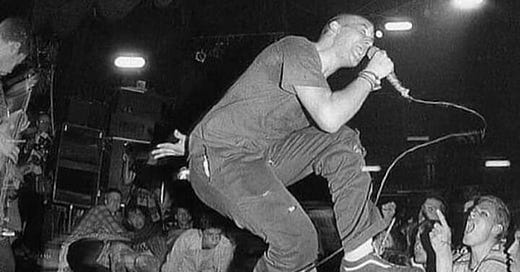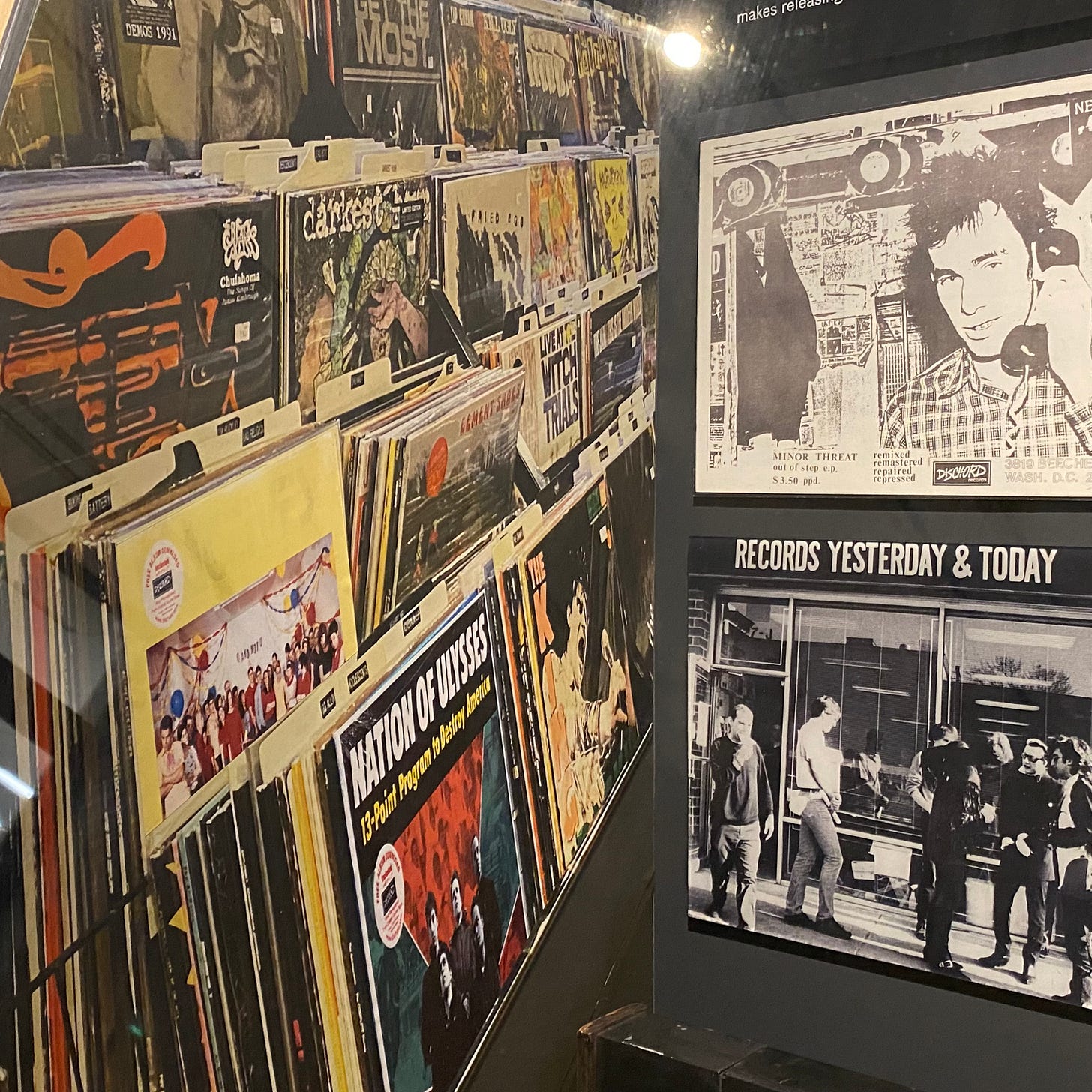March 2025
There’s a video online of a shaggy-haired teenager playing the drums in a punk bank. The boy’s hands are a blur, his head goes up and down and his hair flies around.
The boy is Dave Grohl; the band is Mission Impossible. In the video it’s 1985 and the boy is 16. Dave Grohl would go on to play for Nirvana and to found Foo Fighters.
Grohl grew up in Springfield, Virginia, a short drive from Washington DC.
In the late 1970s and early 1980s, the centre of America’s punk movement was in The Nation’s Capital.
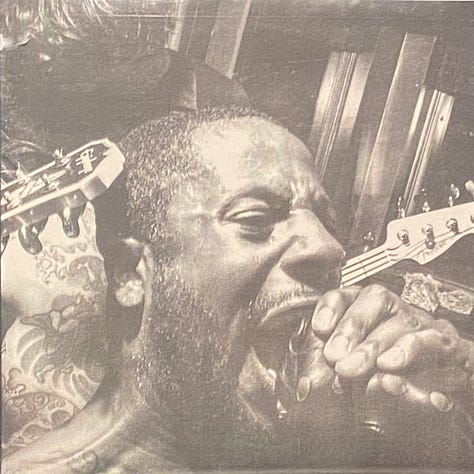
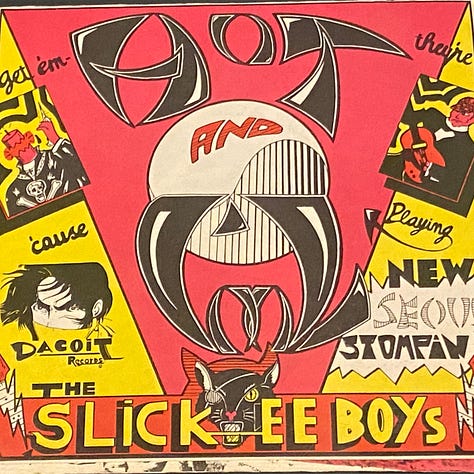

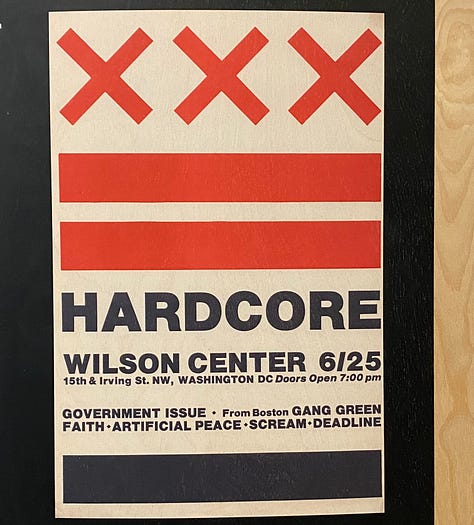
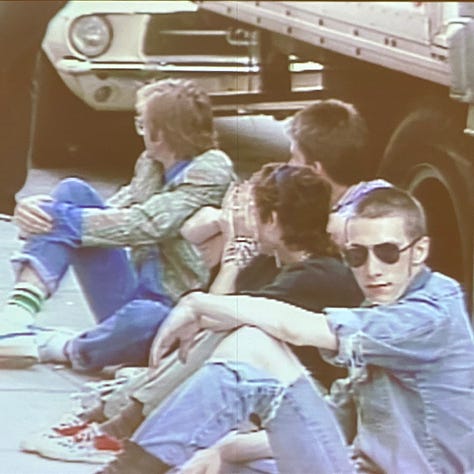
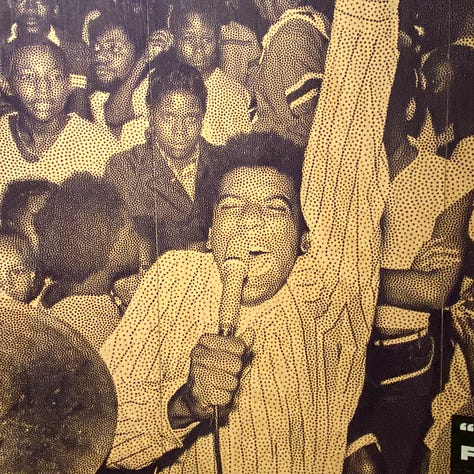
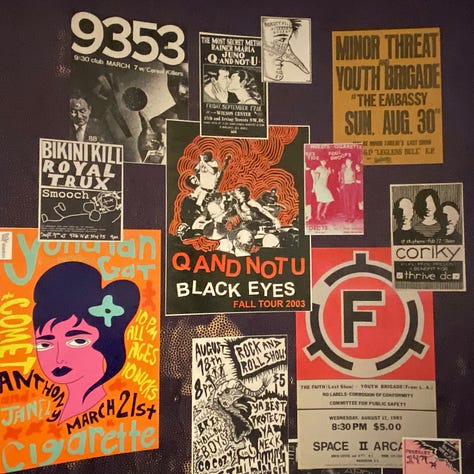
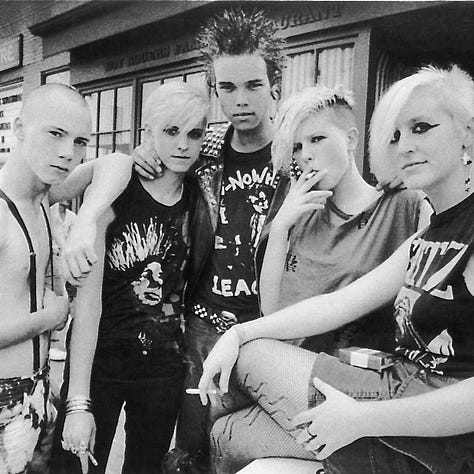
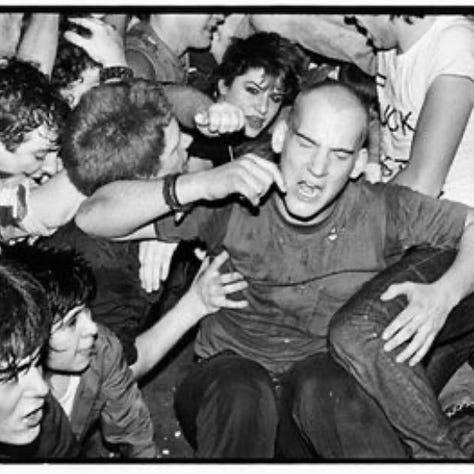
DC’s punks adopted some London punk fashion. But they kept their jeans and sneakers.
They designed a harDCore flag based on the Washington DC city flag with its two red stripes and three red stars. They raged onstage and on their records.
Not unlike a new political party, DC’s punks were a fiercely ideological bunch. Hippies were becoming yuppies and in their view, government was soulless.
DC punks were anti-conformist and anti-capitalist. They were pro-free expression and and pro-community.
Unusually for rockers, they were vociferously anti drugs and alcohol too.
People like Ian MacKaye – who was then fronting the band Minor Threat, and who went on to lead Fugazi – believed that booze, weed and other substances reduced sharpness and should be shunned. They called themselves ‘straight edge’ punks.
Coincidentally, a large proportion of DC’s early punks were very young – often still in high school. A big percentage of fans were teenagers too.
Straight edge punk bands looking for venues to perform could guarantee that there would be no underage drinking – or damage caused by alcohol abuse.
There would be electric noise, lots of it. There would be slam-dancing, crowd-surfing and other mosh-pit behaviour. There would be sweat, smoke and shouting. But there would not be drunken or drug-induced damage.
The crosses on the straight edge flag – the crosses that replace the DC flag’s stars – are the same entry crosses that were drawn or stamped on straight edge concert-goers’ hands. They signify a ‘no’ to drinking or taking drugs.
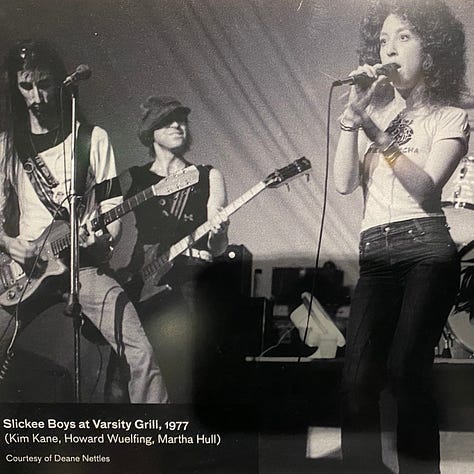
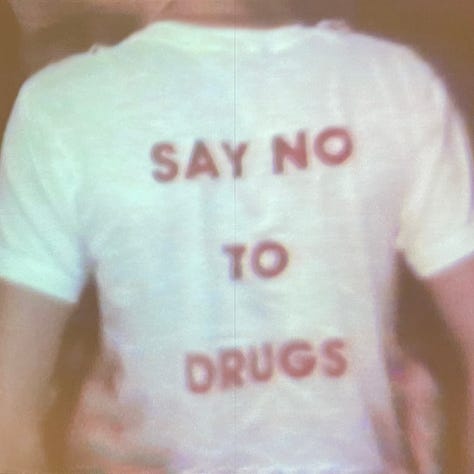

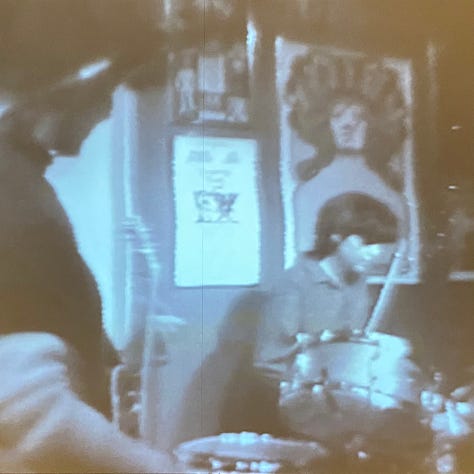
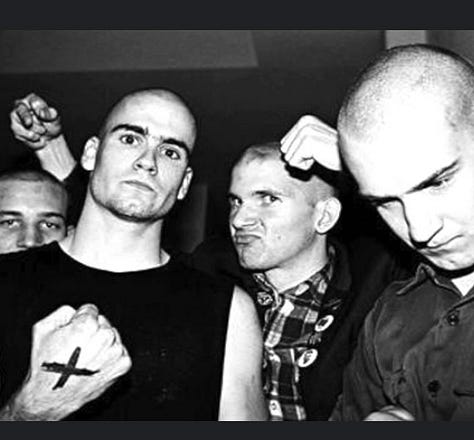

As a city, DC is proud it birthed the US punk movement. DC punk influenced other punk bands like The Dead Kennedys (San Francisco) and Smashing Pumpkins (Chicago). It also informed grunge-rock bands like Nirvana, R.E.M. and Red Hot Chili Peppers.
Washington DC’s central library, the MLK Jnr Memorial Library, is home to a permanent exhibit of DC punk literature, media and video.
Also, some private tour operators lead DC punk walking tours.
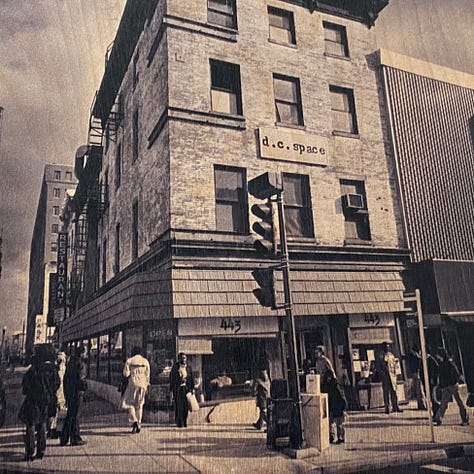
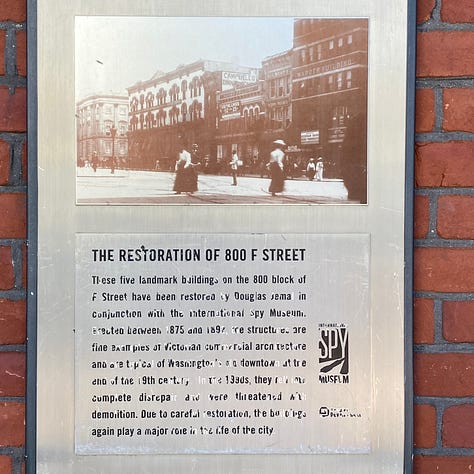
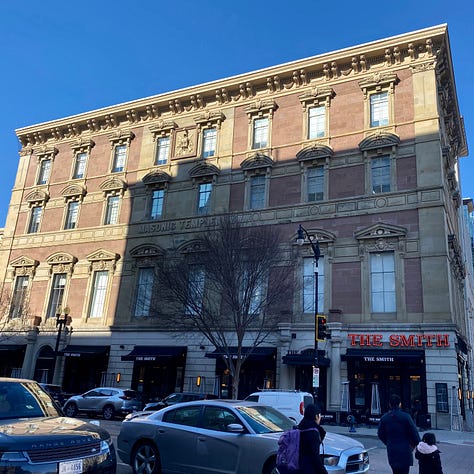
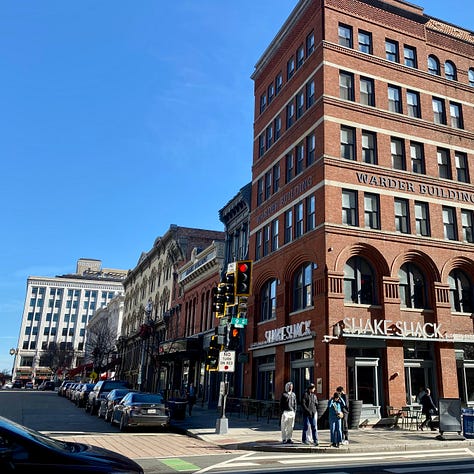



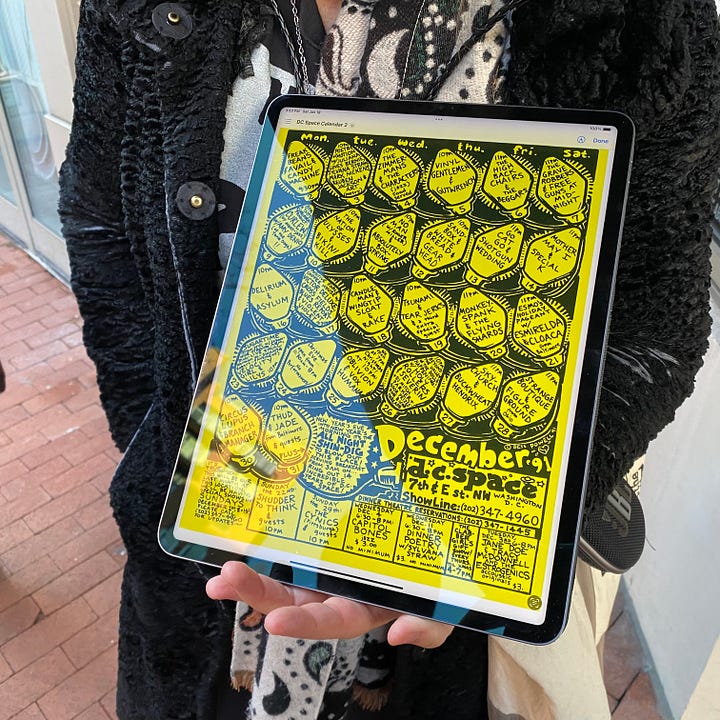
Katie Kirkpatrick of Off the Mall Tours plays us DC punk songs as we walk between former punk venues.
She tells us that in the late 1970s this downtown area was flooded with thousands of office workers during the day - but at night it was almost deserted.
Back then, Penn Quarter was dominated by poorly-maintained Victorian commercial buildings.
Amongst them were some unrenovated performance venues from the late 1800s, when the area was DC’s theatre district.
When punk bands started taking advantage of this dark and dangerous part of town, 9th Street was the place for male prostitutes. There was a gay bar on the corner of 9th and D.
On D Street, just spitting distance from the Brutalist FBI building, there was a place frequented by Bureau agents at lunchtime. Beers, steaks and fries were served by topless waitresses.
Katie Kirkpatrick stops us on 7th Street opposite a Gregory’s coffee shop that used to be the site of d.c. space.
This was an arts venue that had more than one small performance space. It stayed open for 14 years, until 1991, when rental prices forced it out of the downtown area. Fugazi, Laurie Anderson and White Zombie all played here.
We stop on the corner of 9th Street and D, where punk bands performed on the floor above the gay bar.
We stroll past the FBI building to reach the strip joint that punk performers and audience members walked through in order to get to their venue upstairs.
The highlight of the tour is the Atlantic Building, which once housed the 9:30 Club in its basement.
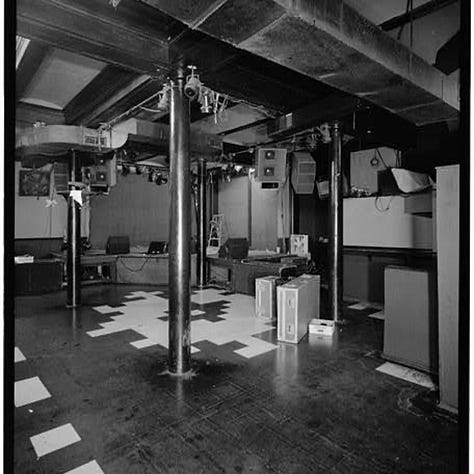
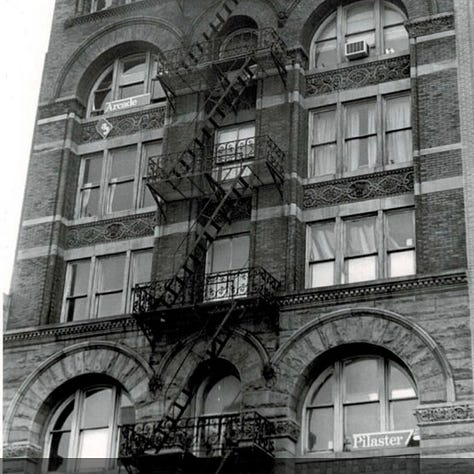
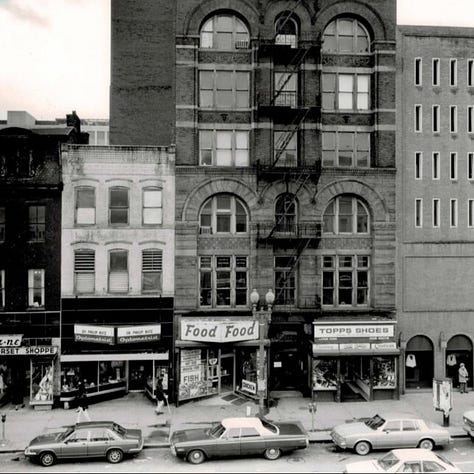

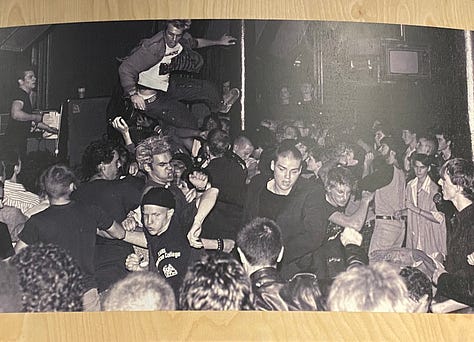
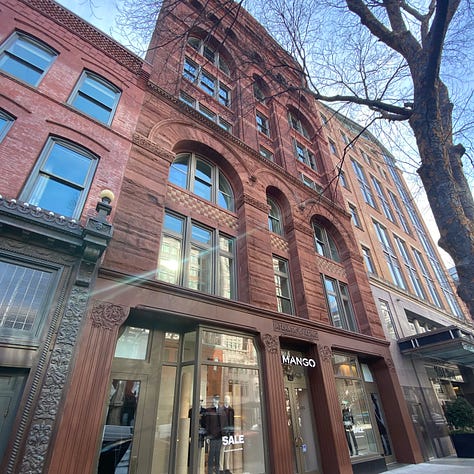
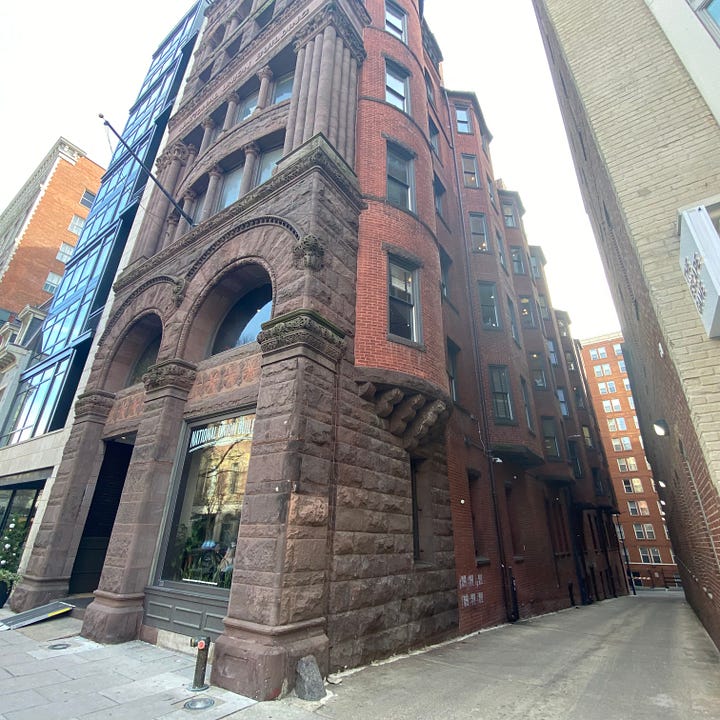
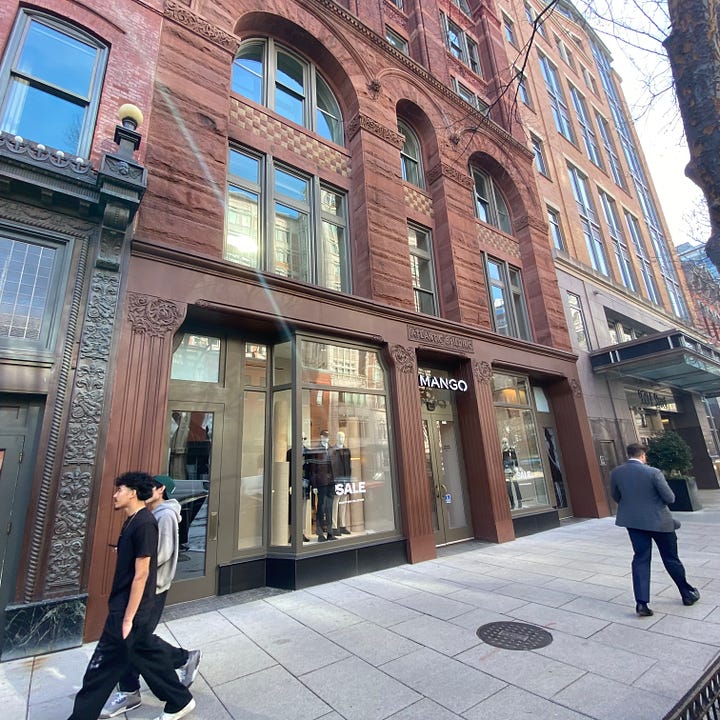
The 9:30 Club is legendary. It operated here at 930 F Street for decades – even though it stank of nicotine, sweat and spilled drinks; even though there were huge rats and the venue was too small; even though there were support beams blocking views of the stage.
The club’s front desk was remarkable – a solid, polished slab of hardwood – and it was stolen.
A nearby restaurant had closed down around the time 9:30 was gaining popularity. The furniture had been removed but the desk stayed in place – until it was ripped out of the floor and walked across to the 9:30 Club.
There’s a wide but dark alley near 930 F St. It doesn’t take much to imagine people huddling in there at night, striking matches and putting the world to rights.
The 9:30 Club became one of the most famous music venues in the world. It was the undisputed headquarters of the DC punk scene from 1980.
Some of the biggest bands in the world played the 9:30 Club in the ‘80s and ‘90s. Kurt Cobain, Billy Joel, Michael Stipe, Cyndi Lauper and Anthony Kiedis all belted it out in this L-shaped space that was never supposed to let in more than 200 people.
The 9:30 Club closed down in 1993, after a new club, Black Cat, opened its doors. The new venue was bigger, airier and it paid its performers better.
The 9:30 Club was done but not out. In 1996, the club’s owners opened a much bigger venue on V Street. It’s still operating, and it’s still called the 9:30 Club.
Two years ago, Dave Grohl and others bought the venue next door. It was smaller, but perfect for the investors’ purposes: They wanted to recreate the original 9:30 Club in the new space.
It’s called The Atlantis (named for the first iteration of the 9:30 Club). It opened in May 2023.
There’s a support beam in front of the stage and it features the stolen front desk.
At the opening, Grohl said this of the 9:30 Club: "I got to witness hundreds of bands that inspired me to become a musician myself.
“(It gave me) that feeling of being in this sort of tribe, like we were all in on this big secret."
Thanks to the photographers of the pics that aren’t mine
.

